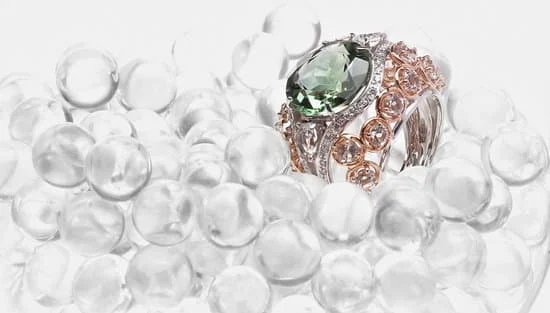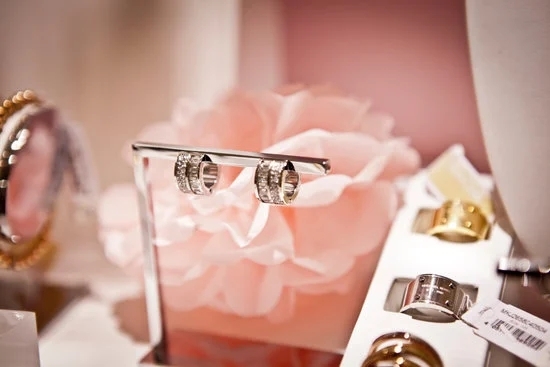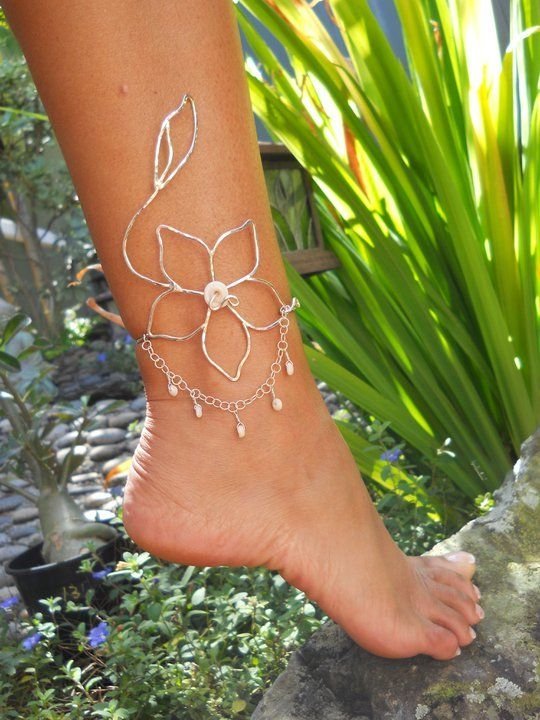Who will buy fine jewelry? The allure of luxury jewelry has always been intertwined with its timeless appeal and emotional significance. Understanding the target audience for fine jewelry is essential in exploring the evolving trends and preferences of buyers. Millennials, wealthy individuals, and those who view luxury jewelry as an investment all play a role in shaping the market for high-end pieces.
Millennials are increasingly becoming a significant part of the consumer base for fine jewelry. Their evolving trends and preferences are influencing the design and marketing strategies of luxury brands. Meanwhile, affluent consumers who have a penchant for investing in high-end pieces drive a large portion of the market. Understanding their buying behaviors and motivations is crucial in catering to their needs.
The allure of exclusivity also plays a significant role in attracting discerning buyers to fine jewelry. Limited edition and one-of-a-kind pieces cater to those individuals seeking something truly unique and special. Additionally, there is a growing market for luxury jewelry as an investment. Exploring the mindset of buyers who view these pieces as lucrative assets provides valuable insights into their purchasing decisions.
Understanding the Target Audience for Fine Jewelry
The target audience for fine jewelry consists of individuals who appreciate the artistry and craftsmanship behind luxury pieces. These are individuals who are willing to invest in high-end jewelry not only for its monetary value but also for its emotional significance.
Typically, these buyers place importance on quality, design, and the prestige associated with owning a piece of fine jewelry. They seek uniqueness and exclusivity, often opting for one-of-a-kind or limited edition items that set them apart from others.
One key demographic within the target audience for fine jewelry is affluent consumers. These are individuals who have the financial means to indulge in luxury purchases and see fine jewelry as a symbol of their success and status. Affluent consumers are driven by the desire to own exquisite pieces that reflect their taste and lifestyle. For them, purchasing high-end jewelry is not only about ownership but also about creating lasting legacies that can be passed down through generations.
Another significant group within the target audience for fine jewelry is millennials. Contrary to traditional beliefs, younger generations have developed a penchant for investing in high-end pieces that hold sentimental value and align with their personal style preferences. Millennials prioritize authenticity, ethical sourcing, and sustainability when it comes to purchasing fine jewelry, making them an influential segment in the evolving trends of the luxury market.
| Target Audience | Description |
|---|---|
| Affluent Consumers | Individuals with financial means who see fine jewelry as a symbol of success and status. |
| Millennials | Youthful generation prioritizing authenticity, ethics, and sustainability when investing in luxury pieces. |
Millennials and Fine Jewelry
Millennials, who are individuals born between 1981 and 1996, are a demographic worth considering when discussing the market for fine jewelry. This generation has been observed to have different attitudes and preferences compared to previous generations when it comes to luxury items. Here are some key points to understand about millennials and their relationship with fine jewelry:
- Millennials prioritize experiences over material possessions, which has led to a shift in their spending habits. Rather than investing in traditional luxury goods such as fine jewelry, they are more inclined to spend on travel, dining, and wellness activities.
- Sustainability and ethical sourcing are important factors for millennials when purchasing any item, including fine jewelry. They are more likely to support brands that adhere to ethical practices and have transparent supply chains.
- Personalization is highly valued by millennials. They prefer unique and customizable pieces that reflect their individual style and identity.
In light of these trends, jewelry brands targeting millennials need to adapt their marketing strategies and product offerings accordingly. By emphasizing the emotional significance of their pieces, incorporating sustainable practices, and providing personalized options, they can appeal to this important segment of consumers who will buy fine jewelry.
Wealthy Individuals and Fine Jewelry
The affluent consumers who buy fine jewelry are a unique demographic with specific buying behaviors and motivations. These individuals place great value on the quality, craftsmanship, and prestige associated with high-end jewelry. For wealthy individuals, fine jewelry is not just an accessory but a symbol of their status and success. They are willing to invest in pieces that reflect their discerning taste and luxurious lifestyle.
According to a report by Bain & Company, the demand for fine jewelry among wealthy consumers is driven by factors such as exclusivity, brand heritage, and emotional value. These individuals seek out unique and rare pieces that set them apart from the rest, whether it’s a rare gemstone or a custom-designed piece from a renowned jeweler.
The emotional significance of luxury jewelry also plays a significant role in their purchasing decisions. Many affluent buyers see fine jewelry as an investment that can be passed down through generations, creating lasting legacies and cherished family heirlooms.
In addition to the allure of exclusivity and emotional value, wealthy individuals are also influenced by the appeal of craftsmanship and design when purchasing fine jewelry. They appreciate the artistry and attention to detail that goes into creating high-end pieces, often developing strong relationships with established jewelers who can cater to their specific tastes and preferences.
| Buying Behaviors | Motivations |
|---|---|
| Seek out unique and rare pieces | Exclusivity, emotional significance, investment |
| Appreciate craftsmanship and design | Prestige, symbolism of status and success |
The Allure of Exclusivity
When it comes to fine jewelry, the allure of exclusivity plays a significant role in attracting discerning buyers. Whether it’s a limited edition collection or a one-of-a-kind piece, the exclusivity factor adds an undeniable appeal for those seeking unique and rare items. Here are some reasons why limited edition and one-of-a-kind pieces attract discerning buyers:
- The rarity of these pieces makes them highly coveted among collectors and luxury enthusiasts.
- Exclusivity enhances the perceived value of the jewelry, making it a desirable investment for those who appreciate craftsmanship and uniqueness.
- Owning a limited edition or one-of-a-kind piece allows individuals to stand out and express their individuality through their personal style.
For individuals who are willing to invest in high-end jewelry, the exclusivity factor adds an extra layer of desirability. Limited edition collections are particularly appealing to those who prefer to own something that is not readily available to everyone. Additionally, one-of-a-kind pieces hold a special appeal for buyers looking for truly unique and rare treasures that set them apart from the crowd.
In the world of fine jewelry, brands often create limited edition collections to cater to this demand for exclusive pieces. These collections may feature rare gemstones, intricate designs, or special collaborations that add an element of collectability to the jewelry.
Similarly, one-of-a-kind pieces crafted by master jewelers are sought after by individuals who value owning something truly distinctive and irreplaceable. Ultimately, the allure of exclusivity continues to be a driving force for discerning buyers in the market for fine jewelry.
Fine Jewelry as an Investment
The Appeal of Luxury Jewelry as an Investment
For many buyers, fine jewelry holds a special place as not just a fashion statement, but also as a valuable investment. The allure of precious metals and gemstones has created a perception that luxury jewelry is a long-term asset that can appreciate in value over time. This mindset attracts a specific segment of buyers who are not only interested in the aesthetic beauty of fine jewelry but also its potential to increase in value.
Understanding the Mindset of Investment-Oriented Buyers
Buyers who view luxury jewelry as a lucrative asset tend to have a keen understanding of the market for rare and exceptional pieces. They may seek out high-quality diamonds, emeralds, rubies, and other precious gemstones due to their rarity and enduring value. These individuals prioritize the craftsmanship, quality, and historical significance of fine jewelry, looking for pieces that are not only visually stunning but also have strong potential for appreciation in value over time.
Factors Influencing the Investment Value of Luxury Jewelry
Historical provenance, exceptional craftsmanship, limited editions, and renowned designers all play a role in determining the potential investment value of fine jewelry. Buyers with an investment-oriented mindset are often willing to pay a premium for pieces with strong provenance or those created by esteemed designers.
They may also consider the rarity and uniqueness of the piece when making their purchase decisions. For these buyers, acquiring fine jewelry is not just about owning something beautiful; it’s also about making a strategic financial investment for the future.
Celebrating Special Occasions
Special occasions hold a significant place in people’s lives, and fine jewelry often plays a central role in commemorating these milestones and creating lasting memories. Whether it’s an engagement, wedding, anniversary, or any other special event, the significance of these moments is often symbolized by the exchange of luxury jewelry.
The act of gifting or receiving fine jewelry during these occasions not only marks the event but also serves as a tangible reminder of the love, commitment, and joy associated with that particular moment.
For individuals looking to celebrate special occasions with fine jewelry, the emotional significance of the piece often outweighs its monetary value. Whether it’s a diamond engagement ring or a pair of pearl earrings for a milestone anniversary, buyers are investing in pieces that represent their love and connection to the person they’re celebrating with.
While some may view luxury jewelry as mere material possessions, for those marking special occasions with these pieces, they hold sentimental value that transcends their financial worth.
Moreover, fine jewelry serves as a means of creating lasting memories. Unlike other gifts or tokens of appreciation, luxury jewelry has the ability to endure generations. Heirloom pieces passed down from one generation to another not only retain their aesthetic appeal but also carry with them stories and emotions from past experiences and special occasions. This aspect further adds to the allure of fine jewelry for individuals who seek to commemorate milestones in a timeless and meaningful way.
The Influence of Fashion and Celebrities
In conclusion, the market for fine jewelry is a complex and dynamic one that encompasses a wide range of potential buyers. From affluent individuals seeking to make a statement with their wealth to millennials looking for unique pieces that reflect their personal style, there is a diverse range of consumers interested in luxury jewelry. Understanding the target audience for fine jewelry is essential for jewelers and brands looking to cater to the specific needs and desires of these consumers.
As discussed in this article, the influence of fashion and celebrities plays a significant role in shaping the fine jewelry market. Style icons and celebrity endorsements have the power to create trends, elevate certain pieces or designers, and ultimately influence consumer behavior. This highlights the importance of staying attuned to the latest fashion movements and celebrity preferences within the industry.
Ultimately, those who will buy fine jewelry are individuals who value quality, craftsmanship, and exclusivity. Whether it’s as an investment, a symbol of love or celebration, or as a reflection of personal style, luxury jewelry holds timeless appeal for a wide range of consumers across different demographics. By understanding the motivations and preferences of these buyers, jewelers can better position themselves to capture this lucrative market.
Frequently Asked Questions
Where Can I Get the Most Money for Jewelry?
You can get the most money for your jewelry by exploring different avenues such as reputable jewelry buyers, auction houses, and online marketplaces. It’s important to research and compare offers from various sources to ensure you’re getting the best value for your pieces.
How Can I Sell My Jewelry Without Getting Ripped Off?
To sell your jewelry without getting ripped off, it’s crucial to do your homework by getting multiple appraisals, researching current market trends, understanding the quality and characteristics of your jewelry, and seeking out reputable buyers or sellers. It’s also wise to avoid making hasty decisions and to be cautious of deals that seem too good to be true.
Who Can Tell Me What My Jewelry Is Worth?
A professional jeweler or a certified gemologist is qualified to assess the value of your jewelry. They have the expertise and knowledge to identify the quality, authenticity, and market value of your pieces. Additionally, there are reputable appraisal services that can provide a formal assessment of your jewelry’s worth for insurance purposes or potential sale.

Welcome to my jewelry blog! My name is Sarah and I am the owner of this blog.
I love making jewelry and sharing my creations with others.
So whether you’re someone who loves wearing jewelry yourself or simply enjoys learning about it, be sure to check out my blog for insightful posts on everything related to this exciting topic!





